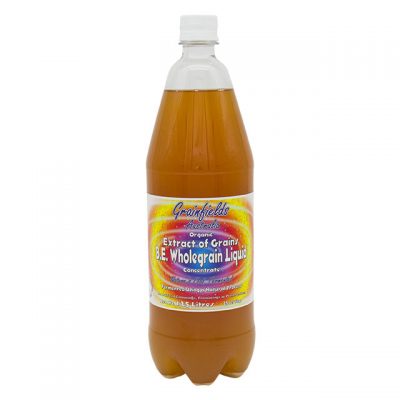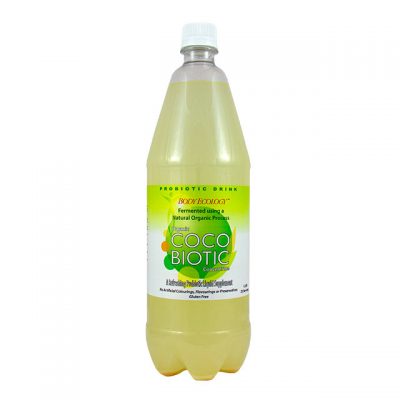Grains are seeds of plants, usually members of the grass family but there are a few exceptions. They are annuals, that is, they have to be planted every year. Like all seeds, cereals are very nutritious because they contain all the nutrients the embryo plant needs to start growing. Unrefined cereals are valuable sources of proteins, carbohydrates, B vitamins and also contain some fat, iron, vitamin E and trace minerals and are a very good source of fiber in the diet.
Barley
 Barley belongs to the genus Hordeum, of the family Gramineae. Barley is classified as Hordeum vulgare.
Barley belongs to the genus Hordeum, of the family Gramineae. Barley is classified as Hordeum vulgare.
One of the most ancient of the cultivated plants, its cultivation is mentioned in the Bible, and it was grown by the ancient Egyptians, Greeks, Romans, and Chinese. It is now the fourth largest grain crop, after wheat, rice, and corn. This hardy grain dates back to the Stone Age and has been used throughout the eons in dishes ranging from cereals to breads to soups (such as the famous SCOTCH BROTH). Hulled (also called whole-grain ) barley has only the outer husk removed and is the most nutritious form of the grain. Pearl barley has also had the bran removed and has been steamed and polished. It comes in three sizes: coarse, medium and fine, and is good in soups and stews.
Barley is an excellent source of vitamin B9 (folic acid), potassium, phosphorus, and magnesium. It also contains iron and calcium. Barley is also high in soluble fiber.
Rice
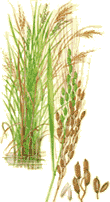 Rice makes up the genus Oryza, of the family Gramineae. Common rice is classified as Oryza sativa.
Rice makes up the genus Oryza, of the family Gramineae. Common rice is classified as Oryza sativa.
This ancient and venerable grain has been cultivated since at least 5000 BC, and archaeological explorations in China have uncovered sealed pots of rice that are almost 8,000 years old. Today, rice is a staple for almost half the world’s population — particularly in parts of China, India, Indonesia, Japan and Southeast Asia. Brown rice is the entire grain with only the inedible outer husk removed. The nutritious, high-fiber bran coating gives it a light tan color, nutlike flavor and chewy texture. Rice bran, the grain’s outer layer, is high in soluble fiber and contains protein and vitamins B complex, E, and K.
Rice contains high levels of carbohydrates and contributes B vitamins – folic acid and pyridoxine – iron, and potassium. Brown rice also contains the B vitamin thiamine, which is present in the bran. Rice has low amounts of sodium and is cholesterol-free. Rice, which is cholesterol- and gluten-free, is low in sodium, contains only a trace of fat and is an excellent source of complex carbohydrates. Rice is high in insoluble fiber and contains phytosterols.
Buckwheat
 Buckwheats make up the family Polygonaceae. Common buckwheat is classified as Fagopyrum esculentum.
Buckwheats make up the family Polygonaceae. Common buckwheat is classified as Fagopyrum esculentum.
One of the first crops grown in America by European settlers and a staple food in the Soviet Union, though little known in most of the world. Buckwheat is not a true cereal as it is not a member of the grass family, instead being related to rhubarb, sorrels and docks. If you look at docks closely, you can see that the seeds, though smaller, have the same distinctive triangular shape. The edible kernels, called groats, are known as kasha and are actually the fruits of the plant.
Buckwheat is rich in high-quality protein, containing about half the amount of protein in an equivalent amount of beef. Buckwheat is also a good source of calcium, thiamin, niacin, riboflavin, potassium and iron. Rutin is a bioflavinoid also found in Buckwheat.
Maize
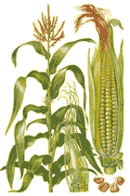 Corn belongs to the family Gramineae. It is classified as Zea mays.
Corn belongs to the family Gramineae. It is classified as Zea mays.
In contrast to rice, corn is primarily a New World staple, first cultivated by the Indians of South, Central and North America. When combined with dried beans and green vegetables, corn provided sound nutrition for the Indians. In fact, corn bread and beans are the main sources of protein and carbohydrates in traditional Mexican diets. Throughout Europe, “corn” has always been the generic name for any of the cereal grains. Europeans call corn “maize”, a derivative of the early American Indian word mahiz. In fact, before settlers came to the New World Europeans had never seen this food — called Indian corn by colonists. What a wonderfully versatile and useful gift the Indians gave the world. Everything on the corn plant can be used: the husks for tamales, the silk for medicinal tea, the kernels for food and the stalks for fodder. Horticulturists developed the two most popular varieties today — white (Country Gentleman) and yellow (Golden Bantam) corn. Yellow corn has larger, fuller-flavored kernels; white corn kernels are smaller and sweeter. The hybrid butter and sugar corn produces ears of yellow and white kernels. As soon as it’s picked, the corn’s sugar immediately begins its gradual conversion to starch which, in turn, lessens the corn’s natural sweetness.
Corn contains phytosterols. It is a good source of protein and high in vitamin E.
Linseed
 Flax plants make up the family Linaceae. The species grown extensively for its fiber and seed is classified as Linum usitatissimum.
Flax plants make up the family Linaceae. The species grown extensively for its fiber and seed is classified as Linum usitatissimum.
Linseeds are shiny and may be dark brown, yellow, or mottled in colour and yields from 30 to 40 percent linseed oil by weight. Linseed is high in essential fatty acids, it provides omega 3 and omega 6 oil. Fatty Acids: 9% Saturated, 18% Monounsaturated, 16% Omega-6, 57% Omega-3. Though the most universal function of flax seed is to produce linseed oil (commonly used in paints, varnishes, linoleums and inks), this tiny seed contains several essential nutrients including calcium, iron, niacin, phosphorous and vitamin E and contains phytoestrogens.
Millet
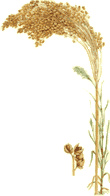 Millet belongs to the family Poaceae. Common millet, or proso, is classified as Panicum miliaceum. Pearl Millet is Pennisetum americanum.
Millet belongs to the family Poaceae. Common millet, or proso, is classified as Panicum miliaceum. Pearl Millet is Pennisetum americanum.
Though America cultivates this cereal grass almost exclusively for fodder and bird seed, millet is a staple for almost 1/3 of the world’s population, particularly in disadvantaged regions of Asia and Africa. There are many varieties of millet, most of which are rich in protein. Millet is the richest in protein of all the grains. It is also rich in silica: good for hair, nails and skin. Of all the cereals Millet contains the highest level of iron. Millet also contains magnesium, calcium, potassium, phosphorus and other minerals, and vitamins A, B1, B2, B3 and small amounts of C.
Oats
 Oats belong to the genus Avena of the family Gramineae. The common oat is classified as Avena sativa and the wild oat as Avena fatua.
Oats belong to the genus Avena of the family Gramineae. The common oat is classified as Avena sativa and the wild oat as Avena fatua.
According to a definition in Samuel Johnson’s 1755 Dictionary of the English Language, oats were “a grain which in England is generally given to horses, but which in Scotland supports the people.” Since oats are by far the most nutritious of the cereal grasses, it would appear that the Scots were ahead of the rest of us. Today, whole oats are still used as animal fodder. Humans don’t usually consume them until after the oats have been cleaned, toasted, hulled and cleaned again, after which time they become oat groats. When steamed and flattened with huge rollers, oat groats become regular rolled oats (also called old-fashioned oats ). Oat bran is the outer casing of the oat and is particularly high in soluble fiber.
Oat grains, as harvested, consist of highly digestible groat (seed) held within an indigestible hull. Oats are high in protein and are particularly good sources of thiamine, or vitamin B1. Oats are high in carbohydrates, most of which are starch; the sugar content of oats is low. Oats are a good source of fiber, contain some protein, and have a higher fat content than rye and wheat flours. They also contain sodium (33mg per 100g) and are an excellent source of B vitamins (thiamine and pantothenic acid), iron, phosphorus, and potassium and vitamin E. High in soluble fiber & resistant starch.
Quinoa
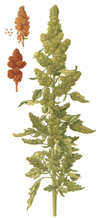 Classified as Chenopodium quinoa Willd
Classified as Chenopodium quinoa Willd
Nutrition, from its almost perfect amino acid composition to its high content of calcium, phosphorus, and iron to its low sodium content, still is the major contributor to quinoa’s popularity. The nutritional value of quinoa has been known for a long time to be superior to traditional cereals and is, in fact, superior to milk solids in feeding trails. Protein content ranges from 10 to 18% with a fat content of 4.1 to 8.8%. Starch, ash, and crude fiber average 60.1, 4.2, and 3.4%, respectively. The ash has been found to primarily consist of potassium and phosphorus (65% of total). Calcium and iron are significantly higher in quinoa than in rice, maize, wheat, or oats.
Rye
 Rye belongs to the family Gramineae. It is classified as Secale cereale.
Rye belongs to the family Gramineae. It is classified as Secale cereale.
Rye is native to temperate Eurasia where it is most heavily used as a bread grain (mixed with other grains). Rye was first cultivated rather late in human history, perhaps as recently as 2000 to 3000 years ago. Rye flour is also heavier and darker in color than most other flours, which is why it produces dark, dense loaves. There are several different types of rye flour, the most common of which is medium rye flour, available in most supermarkets. Light or dark rye flours, as well as pumpernickel flour (which is dark and coarsely ground), are available in health-food stores and some supermarkets.
Milled from a hardy cereal grass, rye flour contains less gluten (protein) than all-purpose or whole-wheat flour.
Wheat
 Wheat, common name for cereal grasses of a genus of the grass family. Classified as Triticum aesitivum.
Wheat, common name for cereal grasses of a genus of the grass family. Classified as Triticum aesitivum.
Wheat has been cultivated for food since prehistoric times by the peoples of the temperate zones and now is the most important grain crop of those regions. Thought to have been growing since Paleolithic times and cultivated for at least 6,000 years, wheat is the world’s largest cereal-grass crop. Its status as a staple is second only to rice. One reason for its popularity is that unlike other cereals wheat contains a relatively high amount of gluten, the protein that provides the elasticity necessary for excellent breadmaking. Though there are over 30,000 varieties of wheat, the three major types are hard wheat, soft wheat and durum wheat. High-fiber whole wheat, and particularly wheat bran, rank as the world’s greatest preventives of constipation.
Wheat is high in protein, folic acid, selenium, vitamin E, calcium, iron, potassium and phosphorus. It also contains good amounts of vitamins A, B complex and small amounts of C. The unprocessed wheat kernel, commonly known as a wheat berry, is made up of three major portions; bran, germ and endosperm. Wheat bran, the rough outer covering, has plenty of fiber. During milling, the bran is removed from the kernel. Wheat germ, essentially the embryo of the berry, is a concentrated source of vitamins, minerals and protein. The wheat endosperm, which makes up the majority of the kernel, is full of starch, protein, niacin and iron. It’s the primary source of many wheat flours. Wheat is also high in soluble and insoluble fiber, resistant starch and contains phytosterols.
Properties of Wheatgerm
It is purely fortuitous that cereal grains such as wheat serve as a food for man and animals, because the purpose of all seeds (which is what grains are) is to produce new plants. The germ of wheat, like the yolk of an egg, is an embryo, and the nutriment that surrounds it is intended by nature to nourish the embryo. The name ‘wheatgerm’ is ill chosen because to many people the word ‘germ’ conjures up a harmful microbe, whereas it refers to germination, i.e., the beginning of growth of a seed. Wheatgerm is a super food because nature has packed into the wheat kernel so much concentrated nutrition.


